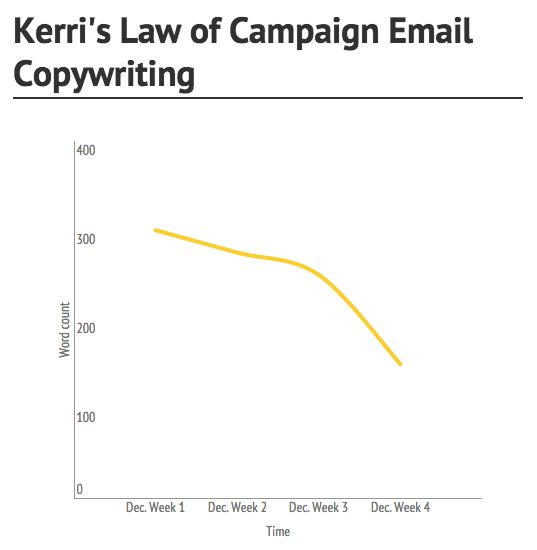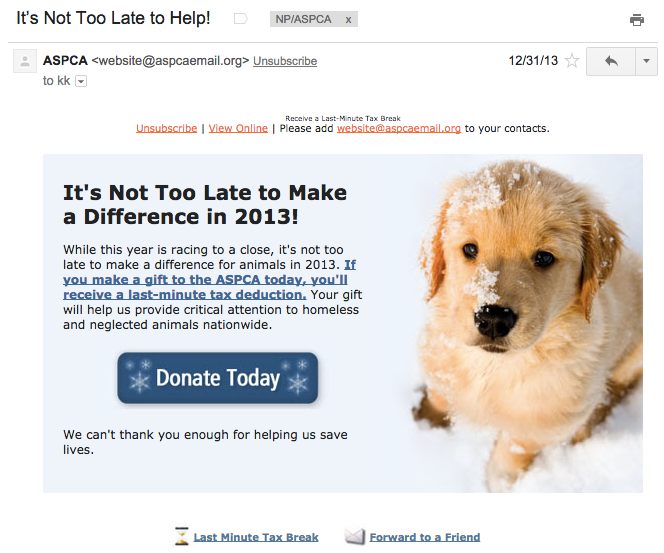
Photo credit: https://www.flickr.com/photos/28681973@N00/15053486347/
OK, copywriters. Listen up.
It’s year-end fundraising time. You’re probably planning to crank up your nonprofit’s email schedule with fundraising appeals in December. How many are you going to send? One, four, six?
No matter how many you send, let’s all agree that you’ll send one e-appeal on Dec. 31. Promise! If you don’t, you’re leaving money on the table. Aggressive fundraisers will send multiple emails between Dec. 26 and Dec. 31, and they will receive an avalanche of donations. (For a month-by-month breakdown of online giving, see Blackbaud’s 2013 Charitable Giving Report.)
Now, let’s also agree on the length of those late December emails.
Kerri’s Rule of Online Campaign Copywriting
My speciality is online copywriting. If you get emails from Amnesty International USA, American Heart Association, International Rescue Committee, National Wildlife Federation or UNICEF USA, chances are you’ve gotten something I’ve written.
The following rule has never failed me. It’s simple. And it works.

The closer you get to your campaign deadline — in this case, Dec. 31 — the shorter the email. (Notice I did not say the end of the campaign. The end of your campaign is a Thank You email, sent in the beginning of January.)
Why? On Dec. 31, both you and your donor know what you want. You’ve tugged at their heartstrings all month long with compelling stories and urgent requests to give now. You’ve made your pitch. You want that gift.
The donor wants to feel good, reduce her tax load, and make a donation as quickly as possible. SEE, YOU WANT THE SAME THING! So get your 400-word email out of the way!
Stop selling. Start closing. Keep it short, and go for the ask as quickly and obviously as possible.
If you want to tell a story and you can write tight, go for it! But by tight, I mean Ernest Hemingway tight:
Baby shoes. For sale. Never worn.
Feel the punch in your gut with that? It is claimed that Ernest Hemingway won a contest writing that short story. Alas, Snopes says FALSE.
Don’t dump all convention in these final emails. Definitely keep this:
- Make an urgent case for giving NOW
- Show impact: “your gift will give hope and comfort to families struggling with BAD THING”
- Make the ask, a.k.a. the call-to-action, as high up in the email as possible (don’t bury it)
Here’s an example:

Got a great example of a successful year-end fundraising email? Share it in the comments.
P.S. This blog post title was inspired by Michael Pollan’s In Defense of Food: An Eater’s Manifesto. The book famously opens with the line: “Eat real food. Mostly plants. Not too much.” Talk about tight!






